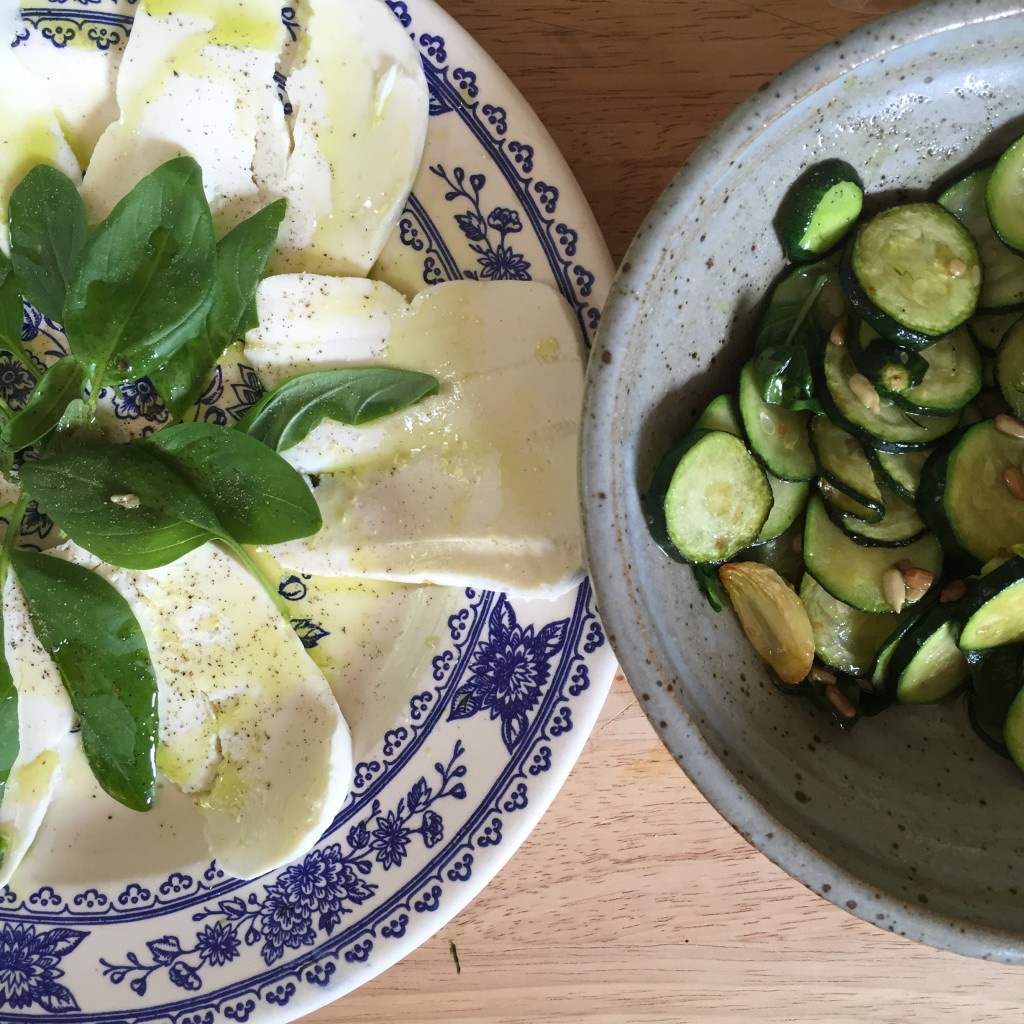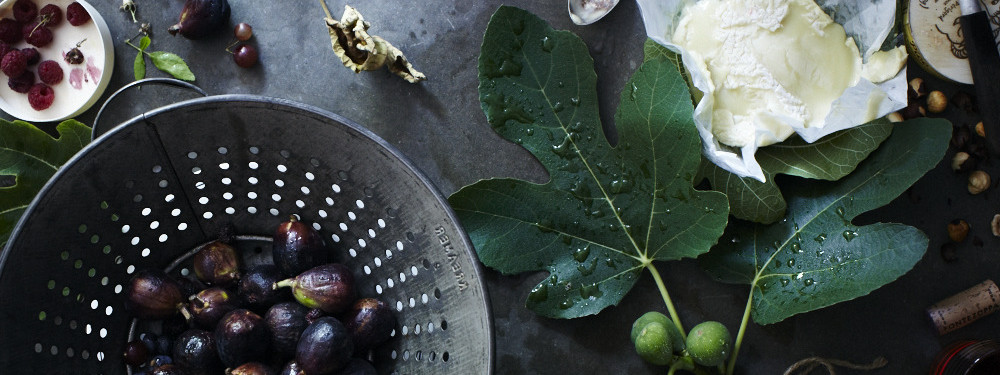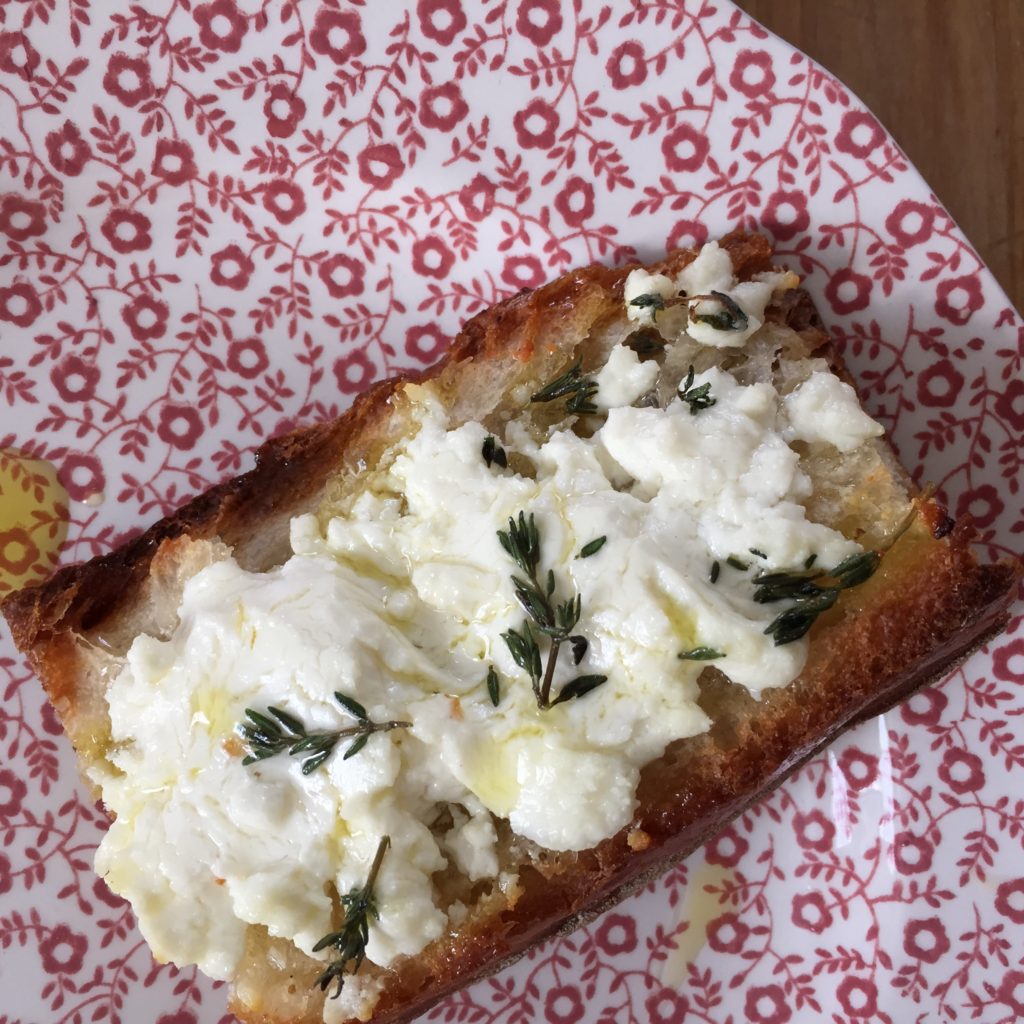 The key to cooking in summer is staying cool. I’d say there are a few ways to achieve this, and sometimes it means not cooking at all- in fact, I often resort to this tactic. Learn to satisfy your appetites with food that can be made without any of that pleasurable (but hot) work known as cooking. This is where skillful purchasing comes in handy…
The key to cooking in summer is staying cool. I’d say there are a few ways to achieve this, and sometimes it means not cooking at all- in fact, I often resort to this tactic. Learn to satisfy your appetites with food that can be made without any of that pleasurable (but hot) work known as cooking. This is where skillful purchasing comes in handy…
Stock up on things that can be eaten as is. Find a really great cheese or two that work well in several light dishes.
My summer fridge usually has an assortment of cheeses that are great for appetizers- but will just as often be employed in salads. Goat and sheep’s milk are a bit lighter and feel right to me in the heat. I love a really good feta cheese. My absolute favorite right now is from Vermont Creamery. It’s a goat’s milk feta. Like a French feta it’s not too salty, and it’s got the texture of a good Bulgarian one; creamy and soft enough that you can spread it on toast, but dry enough that it breaks into nice large crumbles- perfect for tossing into a salad. This could mean a green salad, a crunchy Greek salad, or a more substantial one such as orzo pasta, farro, or bulgur wheat that you’ve cooked ahead of time and tossed with cooked or raw vegetables and herbs. Remember that when food is chilled it often needs a little bit of extra salt and a drizzle of delicious olive oil to heighten the flavors.
Learn how to choose ripe, delicious fruit and fresh vegetables to eat with your favorite cheeses. First of all, feel the fruit’s weight; it should give the impression of density and fullness. Stone fruit should be slightly tender to the touch but not mushy. Most helpful in choosing fruit is the scent; ripe fruit should be fragrant. Don’t store your fruit (and that includes tomatoes) in a cold place, unless it’s overripe and you need it to last longer; in that case, allow it to come to room temperature before it’s time to eat. Once it’s been cut into, you do need to refrigerate fruit; it will rot quickly, and attract fruit flies. Vegetables should be bright and look lively, with perky tops; greens must not be droopy. In the height of summer, pods and shells and even green beans are slightly shiny and taut. Gorgeous.
Some pairings I love:
Canteloupe or watermelon with feta or ricotta salata cheese, with coarsely ground black pepper. Sometimes I add fresh chilis, basil or mint and a squeeze of lime.
Apricots with creamy soft-ripened cheese; a mild Robiola, or with fresh ricotta (sheep’s milk if you can get it) or even good old cream cheese. I like a drizzle of honey and almonds or hazelnuts too.
Most stone fruits; Peaches, nectarines, pluots, plums and cherries with soft goat cheese, or try with cream-filled burrata if you can find it- as suggested so temptingly in the August issue of Better Homes and Gardens.
Beets, cucumbers, and peppery salad greens with fresh or aged goat cheeses or feta cheese.
Pecorino, aged about 6 months so that it’s sliceable- or dry enough (as in pecorino Romano) to grate as you would with a parmesan over pretty much any green vegetable, cooked or raw: zucchini, Swiss chard, kale, asparagus, English peas, favas, sugar snap peas…
Tomatoes and Mozzarella (obvs)! This is cow’s milk, all right, okay… and such a good summer cheese. Also seen in the photo above, with an improvised contorno of sautéed zucchini and garlic with sunflower seeds. Find the freshest and tastiest mozzarella you can, and use your best olive oil to drizzle. I learned from the Romans to keep my mozzarella in its water on the counter at room temperature until time to serve. It went against my cautious American food training, but was totally safe and its texture was so rich and amazing, much better than when stored dry and served cold. Don’t forget the basil.

 Summer cooking is… Standing barefoot in the kitchen next to the screen door, stirring pieces of day-old bread and garlic cloves in a cast iron skillet, until the garlic cloves soften enough that you can smash them with the back of the wooden spoon. They let out a sweet, roasted smell and infuse the olive oil that slicks the bottom of the pan.
Summer cooking is… Standing barefoot in the kitchen next to the screen door, stirring pieces of day-old bread and garlic cloves in a cast iron skillet, until the garlic cloves soften enough that you can smash them with the back of the wooden spoon. They let out a sweet, roasted smell and infuse the olive oil that slicks the bottom of the pan.





